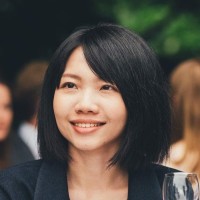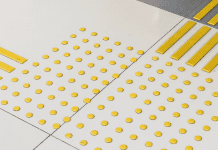In this article, Ru-Han Wu, senior software engineer at Bricsys, explains to PBC Today what a day in her job role consists of, how she got started in the AEC industry, and how companies can encourage more women to join the sector
What is your role, and what does this encompass?

I am a senior software engineer at Bricsys®, and my role includes a mix of technical and people skills. This means addressing and generating codes to fix bugs and researching and implementing new features for BricsCAD®, our hero CAD software.
Our team receives feedback from our 300,000+ user-community, who are big fans of Bricsys solutions. Better than expected, this two-way dialogue allows me to listen to the users’ concerns and work on solving their issues through software changes. It’s a very relaxed environment, where everyone is enthusiastic and supportive.
Typically, during a day with plenty of meetings, I can assess our users’ experience to decide where we should channel efforts, and present recommendations and insights to our stakeholders.
How did you get into the AEC industry?
Originally from Taiwan with no experience in the sector, Belgium was a completely different world for me. I’ve always been interested in models and geometry, and the marriage of software and modelling drew me to Bricsys.
I studied computer science at university and wanted to be part of a fast-moving company, full of interesting people doing exciting things. Working with CAD means I can create software that makes a difference to design professionals’ creativity and their work.
What has been your most unique project at Bricsys?
Part of my role involves knowing how people work with CAD. And as a software engineer, I understand how to bring together the intelligence of software algorithms with our users’. The merging of these two worlds is usually where innovation takes place.
In my first large-scale project at Bricsys, I helped develop the Optimize command. This feature was part of the version 21 update, offering a powerful tool to detect inaccuracies and rectify them using AI. When working in CAD, making corrections is often time-consuming and repetitive – so I’m pleased that I could design software to free users from this burden.
It’s important to feel you can make your own decisions and lead on projects, which is far easier to achieve with an agile and growing company. For me, it’s all about making technological contributions.
What do you advise younger women to consider when entering the sector?
We should not shy away from doing all we can to make engineering a welcoming place for women. Companies must up their game with company culture. And diversity is massively important when attracting women to the AEC sector. Even though I joined Bricsys during the pandemic, I felt supported from the start and got chucked into the deep end by contributing to the Optimize solution.
Women entering the AEC and technology sectors must have a ‘go-getter’ attitude and diversify their scope of work. I wouldn’t have contributed to a solution for better construction workflows if I hadn’t developed this approach.
What’s the most challenging part of your role?
BricsCAD is an end-user product for professional CAD. So, because software products are vital to people’s work and creativity, products often attract criticism from users. This responsibility to get it right, makes my role challenging. BricsCAD users have very diverse professions and needs, and sometimes it’s difficult to translate these into software, which is frustrating for us as tech providers.
The industry is currently lacking enough women as peers and mentors. This is slowly changing, but it is up to the women in the industry to also reach out to younger, brighter minds. Get it right, and the diversity of thought will make a massive difference to the CAD of the future.

















